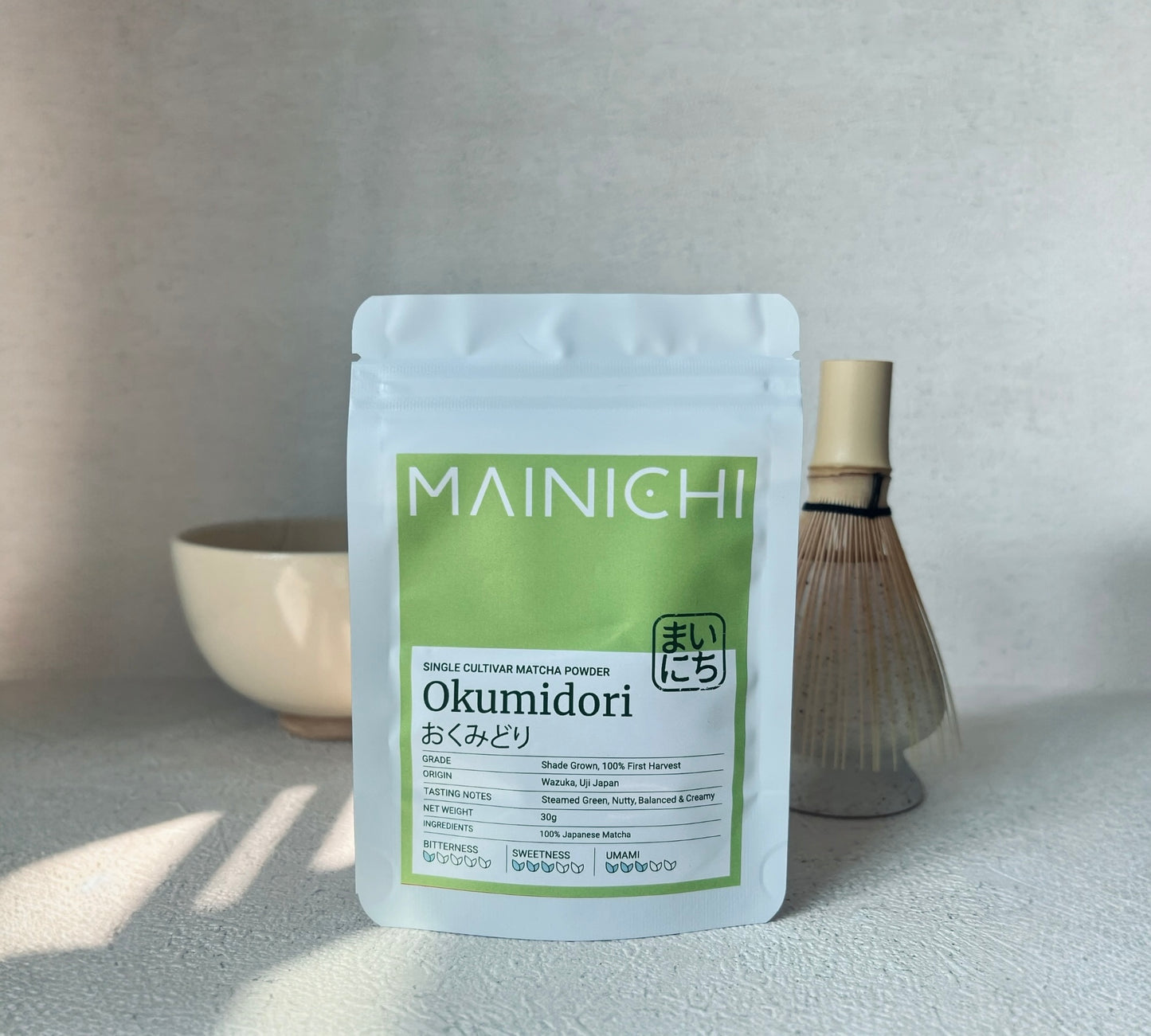
The Ultimate Guide to Choosing High-Quality Matcha: What You Need to Know
Share
If you love matcha for its rich flavor and mood-boosting benefits, understanding what makes a high-quality matcha is essential. In this guide, we break down the key factors that define premium matcha, from the importance of first harvest leaves to the vibrant color that signals shade-grown goodness. By knowing what to look for, you’ll be empowered to cut through the marketing noise and select the best matcha for your taste and well-being.
Read Time: 4 minutes
_______________________________________________________________________
If you’re serious about matcha—whether you enjoy it for its mood-boosting properties, its rich umami flavor, or both—you’ve likely wondered, “What makes matcha high-quality?”
Understanding the factors that influence matcha’s taste and effects can help you cut through marketing jargon and select the best matcha for your needs, ensuring each sip is as delicious and satisfying as possible.
At Mainichi Matcha, the key qualities we focus on when defining high-grade matcha are as below:
100% First Harvest: The Foundation of Flavor and Mood
One of the most important factors in determining matcha quality is whether it’s from the first harvest. This means that the matcha is made from leaves picked during the plant’s initial harvest after winter. Why does this matter?
During the winter months, the matcha plants store essential nutrients, particularly L-theanine and amino acids, in the leaves. These compounds contribute not only to the matcha’s sweeter, more umami-rich flavor but also to its renowned calming effects. L-theanine is responsible for promoting a state of relaxed focus, making first harvest matcha especially desirable for those seeking both a mental boost and a delicious cup.
While it’s true that personal taste plays a role, generally speaking, matcha made from 100% first harvest leaves is considered superior. You’re more likely to experience the full depth of flavor and benefits that high-quality matcha offers.
100% Shade Grown: Vibrant Color and Rich Umami
Another essential factor in determining matcha quality is whether it’s shade grown. For at least 20 days before harvest, the plants are covered, depriving them of sunlight. This forces the leaves to produce more chlorophyll and amino acids, enhancing both the vibrant green color and the deep umami flavor that matcha lovers crave.
When shopping for matcha, pay attention to the color of the powder. High-quality shade-grown matcha will have a bright, vivid green hue, indicating the high chlorophyll content. Matcha that appears dull or yellowish may not be shade grown or could be of lower quality. The deep green color is a key indicator of both flavor intensity and nutrient richness.
If you’re seeking matcha for its mood-enhancing effects and delicious taste, shade-grown matcha is a must. The extra effort required to protect the leaves during growth results in a more concentrated flavor profile and higher L-theanine content. Simply put, if your matcha isn’t shade grown, you might miss out on the rich flavor, vibrant color, and mood benefits that make matcha so special.
100% Direct from Japan: The Gold Standard
You might not know that not all matcha is purely Japanese. Some lower-quality products blend Japanese matcha with matcha from other countries, such as China or Vietnam. While there’s nothing inherently wrong with blended matchas, Japan is recognized as the gold standard due to its shading techniques and favorable terroir.
Japan’s unique cultivation methods and climate conditions consistently produce the best matcha in the world. If you want to ensure your matcha is top-tier, look for matcha that’s 100% sourced from Japan or from a trusted supplier who guarantees its origin. This ensures that you’re getting the authentic, rich taste you’re paying for.
The Value of High-Quality Matcha
As my mother always says, “Buy cheap, pay more.” High-quality matcha reflects the craftsmanship and care put into its production. While the price tag may seem higher, the payoff in flavor, mood-enhancing effects, and overall experience makes every dollar spent worth it. When you know what to look for—first harvest, shade-grown, direct-from-Japan—you’re setting yourself up for a truly exceptional matcha experience.
Empower yourself with this knowledge, and enjoy the richest, most flavorful matcha in every cup!
Key Takeaways:
- First Harvest Leaves: Matcha made from the first harvest contains higher levels of L-theanine and amino acids, giving it a sweeter, more umami flavor and better mood-enhancing effects.
- Shade-Grown Matcha: Bright, vivid green color and rich umami flavor are indicators of shade-grown matcha, which is higher in chlorophyll and nutrients.
- 100% Direct from Japan: Japanese matcha is considered the best in the world due to its shading techniques and terroir. Ensure your matcha is sourced from Japan for the highest quality.
- Cut Through Marketing Terms: Understanding these factors helps you see past vague labels like "premium" or "ceremonial grade" and choose truly high-quality matcha.










